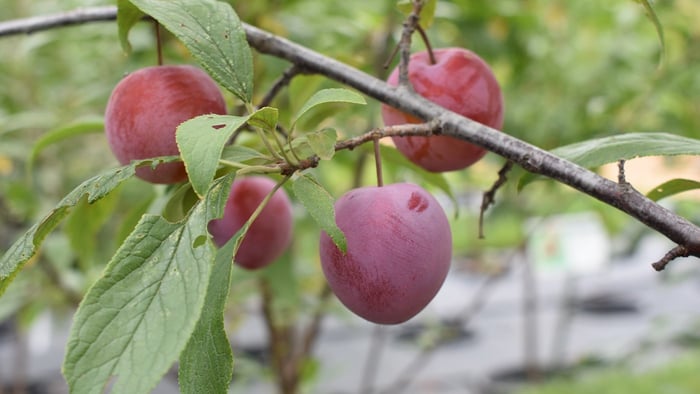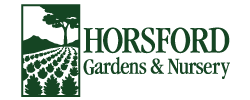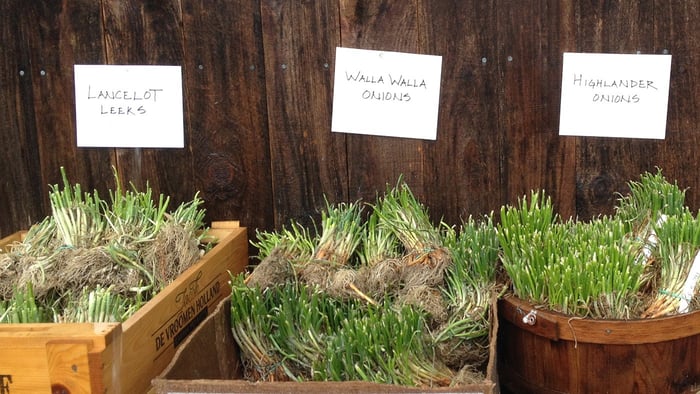
Young Fruit Tree Care
Keep grass and weeds from the base of the tree but put down the weed whacker! Be sure to do this with care and don't damage the tree. Some mulch or compost is helpful too.

Pruning is helpful for fruit trees mainly for air flow, and fruit spacing and support. We also prune for the "three D's" - dead, diseased and dumb (crossing branches). Prune no more than about 20% of the tree at a time. A bad pruning cut won't hurt your tree. Prune to buds on the outside of the branch. If you prune to buds on the inside, the branch will tend to grow inwards and later cross.
Peaches - Prune later in spring. Peaches flower and fruit heavily and branches often break. You want to reduce the canopy so the tree isn't overloaded. Take out crossing, close and repetitive branches.
Apples - Prune in early spring to allow lateral branches that can support fruit. We like to aim for three branches spaced equally around the trunk. Move up, providing space and allowing for another whirl of branches.
If you prune diseased branches, sterilize your pruners between each cut and dispose of material (don't compost).


 Photo by Ronincmc, CC BY-SA 4.0, via Wikimedia Commons
Photo by Ronincmc, CC BY-SA 4.0, via Wikimedia Commons Photo by Amy Manjon, CC BY-SA 4.0, via Wikimedia Commons
Photo by Amy Manjon, CC BY-SA 4.0, via Wikimedia Commons
Both of these diseases won't kill a tree immediately, but they can lead to defoliation which can reduce fruit productivity and overall growth over time. To prevent them, rake up and burn all leaf debris in the fall. There are also preventative, organic, fungicides that can deter them. With any home treatment method you use, always read labels and time application properly.
Borers - the Prunus family (plum, cherry, peach) can be subject to wood-boring insects. These are flying insects that lay eggs at the base of the tree. Larvae bore into the trunk and branches, causing damage to the tree. You can tell your tree has borers if you notice weeping sap mixed with frass (the bug's poop) that looks like goopy saw dust. We recommend keeping the tree healthy and well-watered so it's less vulnearable. Keep an eye on trees in early spring, especially at the tree base. Hand-remove or poke boring larva with something sharp (like a wire), taking care not to damage the tree.

It's helpful to thin fruit so that the fruits you harvest are large and well-developed. How much to thin depends on the species and the overall fruit load on the branch. Orchards recommend small stone fruits like apricots and plums be thinned to every 2-4" apart on the branch. Peaches can be closer to 3-5".
Apples are different from stone fruit in that they produce a cluster of flowers and fruit from each bud. Thin to no more than on to two fruit per cluster.
Remember, fruit trees can be biennial, where they have larger masts of fruit one year, and much less the next.

Some people build a frame for the net, and others drape the net and tie it at the trunk. Be sure to net after the tree flowers so pollinators can still visit. Net while fruit is green and remove the net after harvesting. Eventually, it's hard to net large, mature trees so you may have to share some homegrown fruit with the critters.
As for tree protection during the winter, we always recommend tree collars. They prevent rodents from chewing bark and causing girdling.


